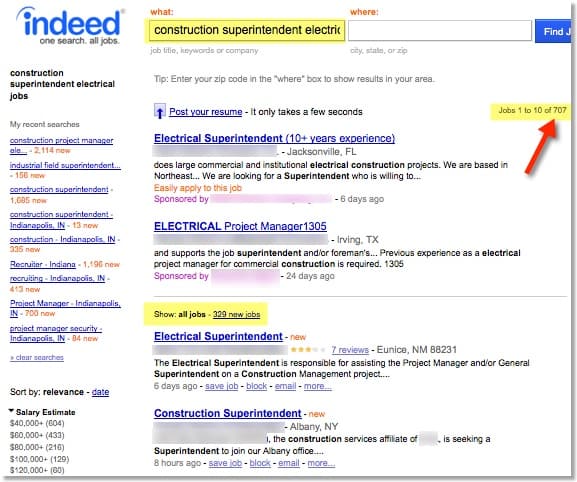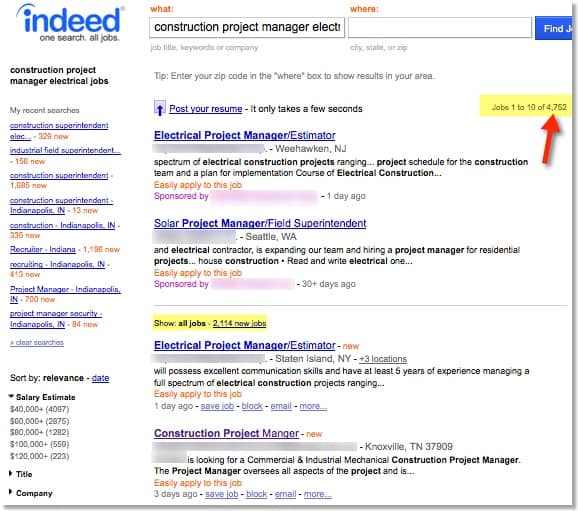How to Write a Job Description Optimized for Job Boards and Internet Search, Tip 4
Is writing job descriptions more of an art or a science? It is perhaps less of a science than it used to be since practices like keyword stuffing are now counterproductive while the focus is truly on producing quality content (as it should be) these days. I’m going to take the easy way out and claim that its a blend of both art and science…or perhaps, strategy is a better word. Gone are the days of packing job descriptions full of keywords to improve on-page optimization and propel your careers portal and job listings to the top of the search results list.
The Three P’s of Job Description Keyword Use
However, many factors have changed in the mystical realm of search engine optimization (at least it seems mystical to me at times) over the past few years and one thing is clear…relevance is king. So while keyword stuffing to the point that a reader was tripping over the same word every paragraph in a text used to be a somewhat effective trick, search engines like Google have since put algorithms in place to penalize such practices.
So what’s a savvy recruiting and HR professional to do to make sure new job opportunities are seen by inquiring applicants? In this fourth installment of the How to Write a Job Description Optimized for Job Boards & Internet Search series, I’ll highlight the Three P’s of Keyword Use in Job Descriptions: presence, popularity and placement. We’ll demonstrate keyword optimization for Indeed as an example.
Are Relevant Terms Present in Your Job Description?
While this is the simplest concept of the Three P’s, it nonetheless is the foundation for success in optimizing your job listings for search results. It really just requires that the most relevant keywords for your target applicant pool are present in your job description. The tricky part lies in the fact that you may not always know which keywords resonate with candidates that are well-qualified for your available career opportunities. To rectify the situation, think about employers in your market that source applicants from the same talent pool – in particular, the ones that seem to be beating you out when it comes to attracting potential new employees. Scour their job listings and take note of the terms they use in job titles and the first paragraph of job descriptions. Are you using the same types of terms in your jobs?
For example, let’s take a construction firm that is seeking a new electrical superintendent for a large industrial contract. When I did a search on Indeed for “construction superintendent electrical,” there were only 707 listings nationwide (since I didn’t specify a location).

However, with a little research of my competitors, I might find that they have job listings titled “Project Manager” with very similar descriptions to my own Superintendent listings. A slightly modified search for “construction project manager electrical” on Indeed yields 4,752 jobs.

So, you might find that it becomes important to include the phrase “project manager” in your listing a few times…perhaps more so than “superintendent.” This may affect your job title decision, as well.
Keyword Optimization For Indeed | Density Considerations
Once you are confident of the right one or two key terms or phrases that you’d like to pepper into your job opportunity text, you must consider the frequency with which these words are used. As I mentioned before, in the past some recruiters stuffed words into the text for best results, but that won’t work anymore. In fact, while “keyword density” isn’t as integral an ingredient in your rankings recipe as before, you definitely don’t want to use terms too often…probably not much more than three percent of your total word count in fact. As with salt, a little can help bring out the flavor in your soup, but too much can quickly ruin the whole recipe. Similarly, too many of the same words in a job description will seem artificial and boring to the potential applicant. Remember the law of diminishing returns.
Consider writing your job description to flow naturally without minding keyword use. Then, go back and reread your text and insert your desired terms a few times. Lastly, think of synonyms and other related phrases and place those in the listing, as well. For our construction example, other words/phrases that might naturally occur with “construction project manager electrical” might include: field labor; electrical superintendent; industrial project; construction project; bid analysis; electrical contractor; and, lead electrical consultant.
These “co-occurring terms” will be recognized by search engines as complementary to your true targeted terms and are just another ingredient in the rankings effort. Plus, they offer the reader more variety and depth…which is more likely to result in the site visitor converting to become your applicant.
Mind the Placement of Job Description Text
So far you’ve learned to use just a few instances of relevant phrases in your job description…but not too many. Truth be told, a little can go a long way as long as you are using the right terms thoughtfully. That’s where placement comes into play. Even though you might include desired phrases only a few times in your job listing, they can pack a punch in rankings battles if you position them strategically within your text. Here are some effective placement techniques:
- Use your primary keyword phrase in your job title.
- Include optimal terms in the first sentence, or at least the first paragraph of your job listing.
- When possible, use keywords in header tags in your text (think H2 & H3 headers). This should be possible when adding job listings using your applicant tracking system.
- If you embed any images in your job listing (and wow, what a way to differentiate your company!), include alt-text that describes the image using your relevant words.
- Take advantage of search engine optimization tools provided by your ATS – particularly, the ability for some of the pages on your careers portal to include your job title within the URL address.
Now that you have a better understanding of how to use keywords strategically within your job listings, including being mindful of the Three P’s, you are well on your way to becoming a job listing ninja!
To see how ExactHire’s recruiting software can help streamline your job description optimization efforts, please schedule a live demo.










 15% OFF FULL-SERVICE HIRING • APPLICANT TRACKING SOFTWARE • ONBOARDING SOFTWARE
15% OFF FULL-SERVICE HIRING • APPLICANT TRACKING SOFTWARE • ONBOARDING SOFTWARE